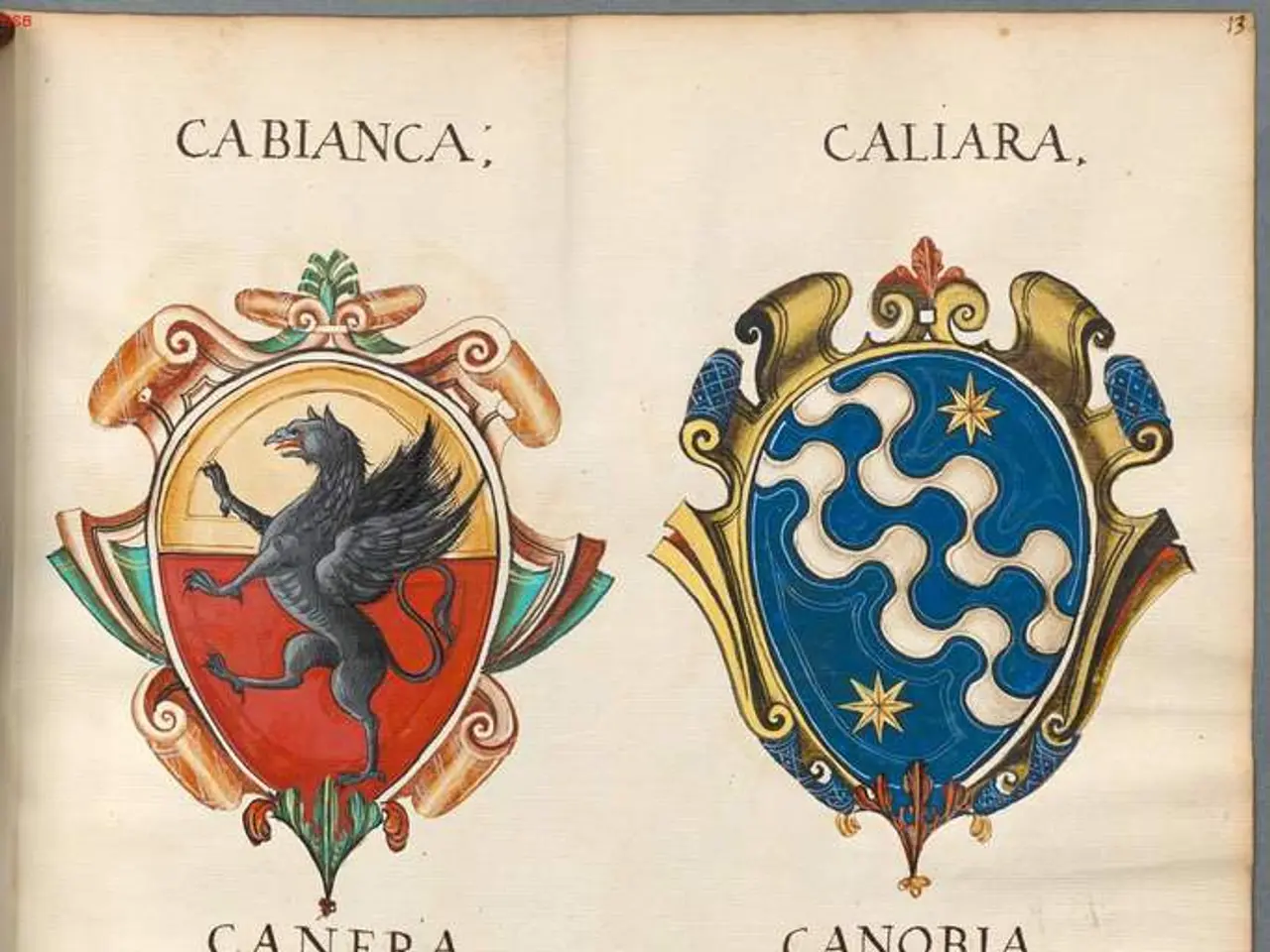Utilizing Various Logo Types for Brand Effectiveness: A Comprehensive Guide
Logos are essential elements of a brand's identity, serving as a cornerstone for recognition and memorability. Here's a breakdown of the various types of logo designs and their unique characteristics:
Typographic Logos
Typographic logos, also known as wordmarks and lettermarks, focus on the brand's name.
Wordmark Logos
Wordmark logos use the full company name with custom typography, like Coca-Cola and Google, to emphasize brand name clarity and recognition.
Lettermark Logos
Lettermark logos, on the other hand, use initials or monograms for brands with longer names or complex titles. Examples include IBM. These logos focus on simplicity and memorability.
Best when the brand name is distinctive or when you want to highlight the name prominently.
Symbolic or Iconic Logos
Symbolic or iconic logos feature icons or graphics representing real-world objects (brandmarks) or abstract shapes representing brand values.
Brandmarks
Brandmarks are logos that depict real-world objects, such as the shell for Shell or the apple for Apple.
Abstract Logos
Abstract logos convey unique concepts or emotions distinct to the brand's identity, like Nike’s swoosh.
These logos are great for visual association and versatility across media.
Combination Logos
Combination logos pair the company name with an icon, creating a strong brand recall and flexibility in usage. This approach is useful for new or growing brands.
Emblem Logos
Emblem logos contain text inside a symbol or border, like crests or seals. These logos convey a traditional, official, or prestigious feel and are commonly used by universities, governments, and other formal institutions.
Mascot Logos
Mascot logos use a character or spokesperson to personify the brand, making it approachable and family-friendly.
Dynamic Logos
Dynamic logos change appearance based on context while retaining core brand elements, offering flexibility and modern appeal.
Specialized Logos
Monogram Logos
Monogram logos focus on initials styled elegantly, popular in luxury, fashion, and boutique industries.
Letterform Logos
Letterform logos use one distinctive letter from the brand’s name for simplicity and strong visual identity.
How to Choose the Best Logo Type for a Brand
When choosing a logo type, consider the following factors:
- Brand personality and industry: Formal or traditional businesses may prefer emblems or monograms, while modern tech brands might opt for abstract or dynamic marks.
- Brand recognition needs: For new brands, combination logos or logos with clear typography help associate the name with the symbol quickly.
- Versatility and scalability: Logos should work across sizes and platforms. Typographic and minimalist symbolic logos often scale better.
- Clarity vs. creativity: Typography-based logos emphasize clear brand names; graphic and abstract logos focus on emotion and distinctiveness.
- Target audience preferences: Family-friendly brands might choose mascots; luxury brands may lean toward monograms or elegant typographic designs.
- Uniqueness and memorability: Abstract, iconic, or custom letterform logos allow differentiation.
By aligning the logo type with your brand’s story, audience, and usage context, you ensure an effective and enduring visual identity.
Start off with a combination mark, a visual and a word in a composition together, as a starting point for your logo design. Use text effects to make the words stand out and good contrast between shapes and letters in an emblem logo. Dynamic Logos are adjustable or customizable in endless ways, with some changing color while keeping the shape the same, and others adding elements onto the foundation design.
The simplest version of a logo is called a submark, used in small dimensions or in designs that require simplicity above all else. A wordmark logo is made up of the brand name in stylized letters. Use the platform's AI Image Generator and AI Edit Tools to create and edit logos.
Negative Space Logos use empty areas to depict a symbol, shape, or graphic and can be subtle or clear. Emblems can be as simple as a couple of icons and a lettermark inside an interesting shape, or as complicated as a custom illustration with a lot of detail.
A symbol or pictorial logo visually represents the brand name or function. The Coca-Cola logo is the most recognizable logo in the world, with around 94% of the global population knowing it. An emblem logo is a contained design that includes all the elements inside an emblem shape. A well-designed emblem logo can be timeless and worth making stickers with.
3D Logos add an extra layer of uniqueness by making the letters or shapes pop out of the page. Your first-and most used-logo is called the primary logo. An abstract logo goes in a different direction from symbol logos. Animated Logos can be used for video intros and outros, TikTok clips, and explainer videos.
Brands should have different logo styles for different use cases and ideally have at least two and no more than five variations. Use the platform's Background Remover to get rid of any background in an uploaded emblem logo. The shape in a Letters Inside Shape Logo should match the purpose and story of the brand.
Visual content is crucial in showcasing lifestyle, fashion-and-beauty, food-and-drink, home-and-garden products or services, where high-quality images and videos can effectively engage potential customers and evoke desirable feelings associated with the brand. A dynamic logo can serve as an excellent complement to such visual content, providing a versatile and adaptable visual identity that can adapt to various media and contexts.
To create a lasting impression, a well-designed emblem logo can symbolize a brand's tradition, prestige, or uniqueness, particularly within formal institutions, universities, and luxury brands, reinforcing their strong identity and values. A monogram logo, popular in the fashion-and-beauty industry, can help luxury and boutique brands to convey elegance and exclusivity while reinforcing their brand recognition.





